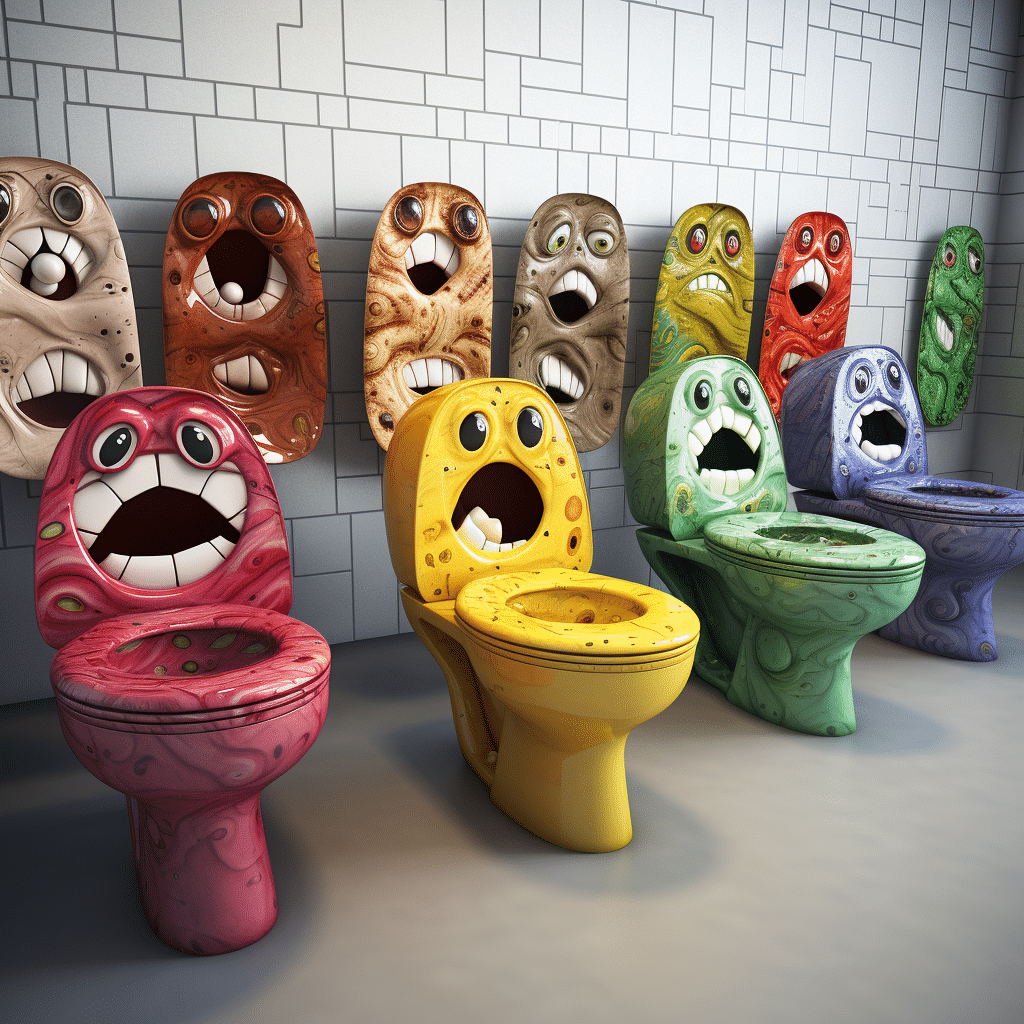Understanding Poop Colors: Normal vs. Abnormal Stool
Poop Colors: Normal and Abnormal Stool Indications: Ordinarily, poop should be brown, have a peanut butter texture, and be sausage-shaped. Occasionally, this color can change due to the meal eaten. A change in the color of stool could be caused by a serious illness. It could also mean that your body is not able to absorb nutrients properly.
A peanut butter-colored poop should not raise any alarm unless there are other issues such as diarrhea, abdominal pains, and floating stool. It is therefore paramount to understand how normal poop differs from abnormal poop.

Peanut Butter Colored Poop and other Type of Poop Explained
Normal Poop
Normal poop is usually brown or golden, has a sausage-like shape, and has a peanut butter texture. It should be firm, easy to pass, Understanding Poop Colors: Normal vs. Abnormal Stool and flushed away. However, what is considered normal in one person may differ from another in size, shape, and sometimes color. Some may be lighter than others.
Abnormal Poop
A stool may be abnormal if there is a consistent change in color, shape, size, and formation. It could also be considered abnormal if it has blood stains, is watery, mushy, floats when flushed, has an odd color such as green, yellow, red, clay, or pale, and is hard to pass. Each stool color has a different indication.
Green Poop
It is not unusual to have green stool after eating lots of veggies or green-colored foods or drinks. However, if this color continues long after the meal, it could indicate that your meal was not well digested and quickly passed through the digestive system. It could also indicate that the digestive system is not producing enough bile to digest food. If the problem persists, you may need to consult a doctor.
Yellow Poop
Yellow stool is common in breastfeeding babies. If the poop is greasy and has an extremely pungent smell, it could indicate that your system is unable to digest food properly. This is common among people who are allergic to gluten. When they eat foods that have gluten, their system is overwhelmed and cannot digest the food properly. It could be time to see your doctor if you see such yellow, greasy, and smelly stool.
Light Or Pale Stool
Drugs such as antidiarrheal and barium, the medicine you take before an X-ray, could make your stool appear pale or light. The liver produces bile that turns your stool brown. Biliary atresia, gallstones, Hepatitis A, B, and C, Alcoholic hepatitis, and tumors in the liver could affect the production of bile which can alter the color of poop.
Black Poop
Blueberries, black licorice, and iron supplements could cause your stool to turn black. Additionally, bleeding of the digestive system could lead to black poop. Several factors could lead to bleeding in the digestive system including cancers of the system, non-cancerous tumors in the upper tract, stomach ulcers, and bleeding from the esophagus due to acid reflux. You need to see your doctor if you haven’t eaten anything that could make your poop turn black.
Orange Poop
Foods with beta carotene such as carrots, squash, and sweet potatoes can make your stool appear orange. Food coloring and indigestible wax esters found in uncooked fish dishes could also lead to orange poop. Certain medications such as antacids that contain aluminum hydroxide, cefdinir, and supplements containing mineral oils could cause an orange anal leak. Digestive problems and lack of bile to digest food may also lead to poop discoloration. In pregnant women, a condition referred to as cholestasis could lead to a slowed flow of bile and thus lack proper absorption of food in the system. This condition usually occurs in early pregnancy. This condition should be treated to prevent further complications.
Reddish Poop
After you have had a serving of food or drink with red coloring, you are likely to have a red stool. However, this should be for a short period. If you continue passing red stool, it could probably mean there is internal or external bleeding. Some causes of the bleeding are; colorectal cancer, f inflammatory bowel syndrome, GI bleeding, anal fissure, and hemorrhoids. If the color does not change back to normal in a few days, you should consider talking to your doctor.
When To See A Doctor
You could see a doctor when;
- The color of your poop changes without altering your diet or medicine.
- It gets watery and musky
- It has blood stains.
- It is hard to pass and could rupture your anus.
- Pooping too often or less than three times a week.
- It is painful to poop.
- It is greasy and oily.
- Floating poop.
- Hard and dry stool.
- It is green, black, red, orange, white, and yellow.
Summary of Indicators of Normal Stool
- It should be golden brown to dark brown.
- It has an unpleasant odor caused by bacteria in the stool.
- Each person has a unique stool, but it should be consistent in color, appearance, texture, frequency, and smell per person.
- Be passed once or twice daily.
- It should have a soft to firm texture.
- Normal healthy stool should be free to pass.
- It should take a maximum of 15 minutes to pass.
Causes Of Abnormal Poop
Abnormal poop could be caused by several factors including; stress, dehydration, k]lack of dietary fiber, food intolerance and allergies, and constipation. Medical conditions such as inflammatory bowel syndrome, cancers, an underactive or overactive thyroid, gallstones, and liver abscesses could also affect the color of your poop.

How To Have Normal Stool
For a healthy bowel movement, you could try to;
- Drink plenty of water.
- Avoid very greasy or fatty foods.
- Eat enough fibers
- Take probiotics
- Have a healthy lifestyle.
- Consult a doctor when you suspect there is a problem.
Understanding Poop Colors: Normal vs. Abnormal Stool Poop Colors: Normal and Abnormal Stool Indications peanut-colored poop is normal unless accompanied by other complications such as pain when pooping, abdominal cramps, and stomach pains. If the texture is hard or watery and mushy, peanut-colored poop could indicate a health problem.






